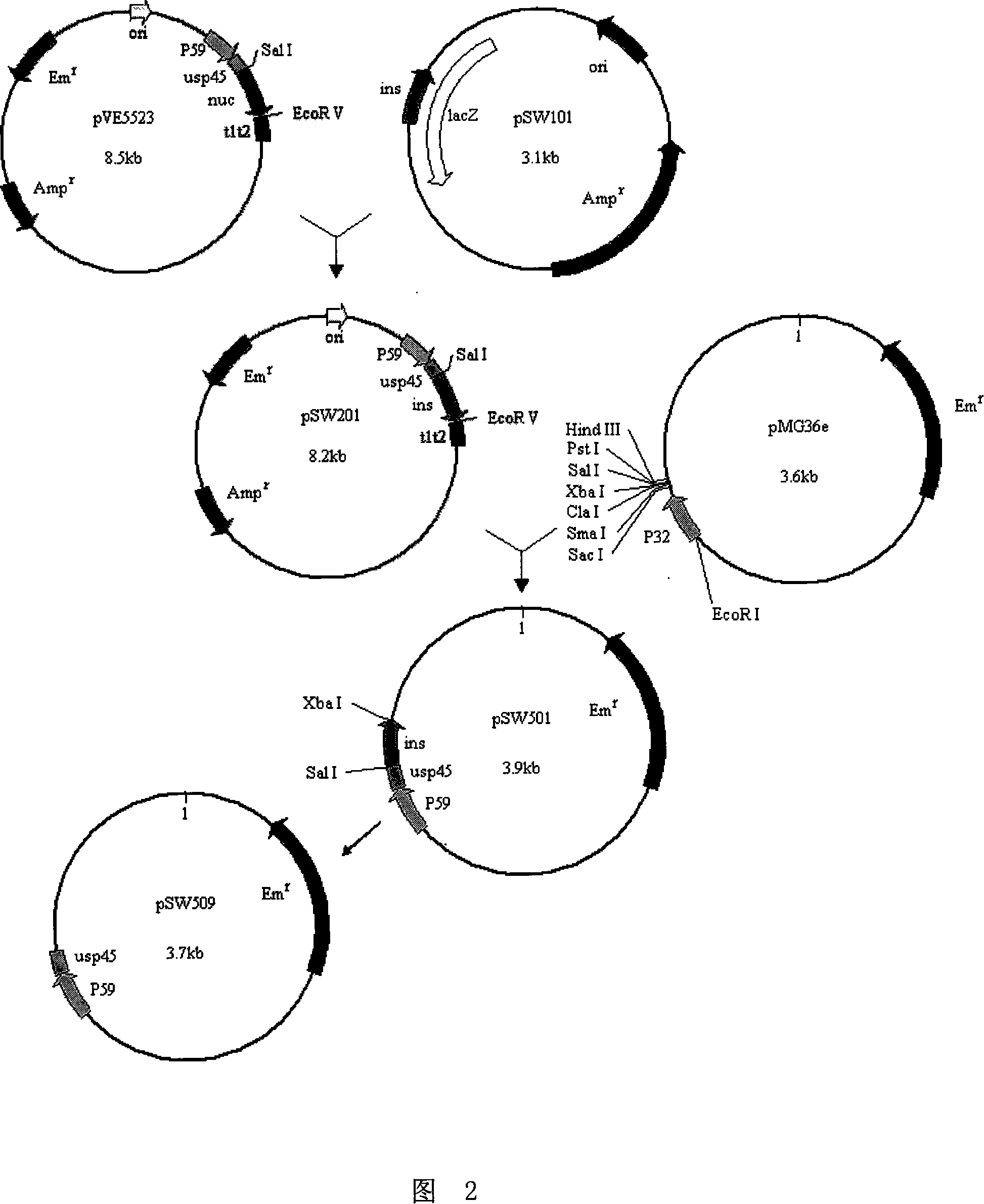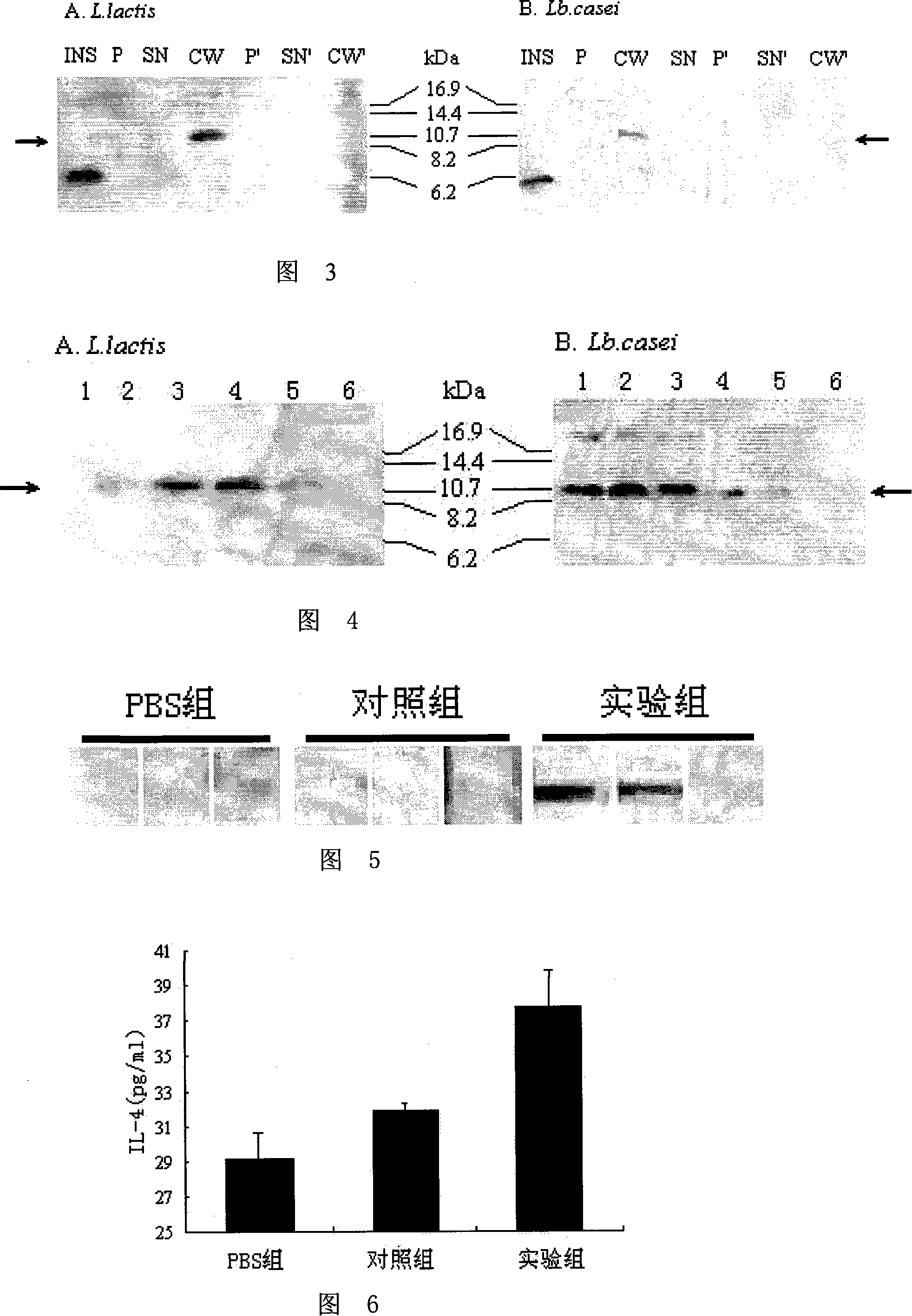Recombination human insulin and its coding gene and application
A technology of recombinant human insulin and coding gene, applied in insulin, application, gene therapy and other directions, can solve the problems of cumbersome process and achieve the effect of good application prospect
- Summary
- Abstract
- Description
- Claims
- Application Information
AI Technical Summary
Problems solved by technology
Method used
Image
Examples
Embodiment 1
[0042] Embodiment 1, acquisition of recombinant human insulin gene and engineering bacteria expressing it
[0043] 1. Synthesis of recombinant human insulin gene
[0044] Replace 37 base pairs in the human insulin gene sequence according to the preferred codons of lactic acid bacteria, and add the coding sequence of the connecting peptide (RRSPNGKR) between the A and B chain sequences 5'-CGTAGATCTCCTAATGGAAAACGT-3', RR and KR for insulin The amino acids at both ends of the original C peptide, SPNG is conducive to the formation of a β-turn structure, and the spatial structure simulated by the recombinant protein is very similar to the natural insulin structure.
[0045] Design eight splicing primers (shown in Table 2, 1-4 are positive strand splicing primers in Table 2, and 5-8 are negative strand splicing primers) according to its positive and negative strand sequences, add 5'-Pi with T4 phosphokinase , then heated to 95°C, slowly annealed to room temperature, ligated overnig...
Embodiment 2
[0080] Embodiment 2, engineering bacterium ATCC27092-pSW501 is used as the animal effect experiment of oral vaccine
[0081] 1. The culture and collection of engineering bacteria ATCC27092-pSW501 live bacteria
[0082] The engineering bacterium ATCC27092-pSW501 was inoculated to 1% by volume (10 7 cfu / ml) inoculum amount inoculated in MRS medium, cultured statically at 30°C until OD 600 0.3-0.4. The bacteria were collected as an oral therapeutic vaccine for non-obese diabetic (NOD) mice, and Lactobacillus casei ATCC27092 was cultured to OD in the same way 600 0.3-0.4, collect the bacteria as a control.
[0083] 2. Oral effect experiment of engineering bacteria ATCC27092-pSW501 on non-obese diabetic (NOD) mice
[0084] Eighteen 4-week-old non-obese diabetic (NOD) mice (purchased from the Institute of Experimental Animals, Chinese Academy of Medical Sciences) were randomly divided into a PBS group, a control group and an experimental group, with 6 mice in each group. The PB...
PUM
 Login to View More
Login to View More Abstract
Description
Claims
Application Information
 Login to View More
Login to View More - R&D
- Intellectual Property
- Life Sciences
- Materials
- Tech Scout
- Unparalleled Data Quality
- Higher Quality Content
- 60% Fewer Hallucinations
Browse by: Latest US Patents, China's latest patents, Technical Efficacy Thesaurus, Application Domain, Technology Topic, Popular Technical Reports.
© 2025 PatSnap. All rights reserved.Legal|Privacy policy|Modern Slavery Act Transparency Statement|Sitemap|About US| Contact US: help@patsnap.com



